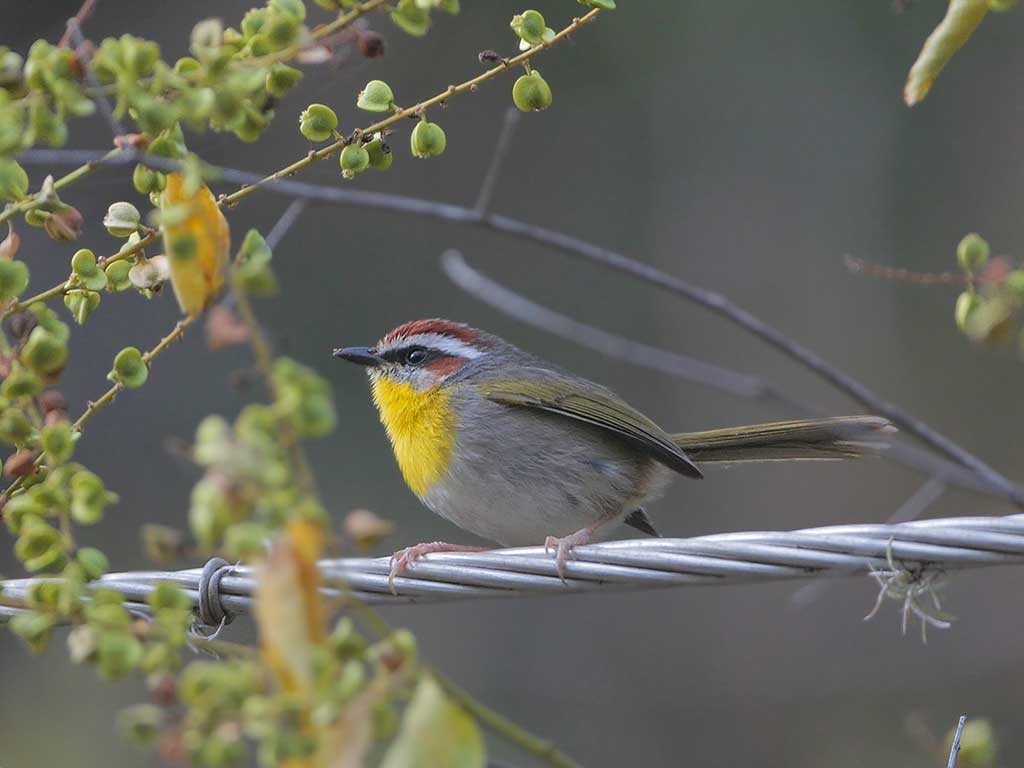The Rufous-capped Warbler is a rare species in the United States. It is not reported most years, and then only one or two individuals.
On this page
Description of the Rufous-capped Warbler
BREEDING MALE
Tail usually cocked, robust body. Rufous crown, white line over the eye, red to rear of eye. White under the eye. Yellow chest and upper belly. Olive back without wingbars. Short, rounded wings.
Female
Sexes similar.
Seasonal change in appearance
None.
Juvenile
Similar to adults.
Habitat
Scrub or brush, often near oak woods.
Diet
Insects and spiders.
Behavior
They find food by scanning very close to the ground looking for sudden movements. (Dunn and Garrett 1997)
Range
Mexico to Central and South America. Occasional reports in Texas and Arizona.
Fun Facts
Often flicks its cocked, spiny-looking tail in a sideways motion.
Vocalizations
A “chit-chit-chit-chit” call. Sometimes it gives a call with a higher sounding “tsi”. (Dunn and Garrett 1997)
Similar Species
- No similar species in the United States.
Nesting
A dome shaped nest with a side entrance. Nest made of plants and fibers placed on the side of steep banks, rocks or logs.
Number: Usually 3-4.?
Incubation and fledging:
– The young hatch at about 12-14 days?
– Young fledge at about 9-12 days, though remaining dependent on the adults for some time.
Bent Life History of the Rufous-capped Warbler
Not available.


